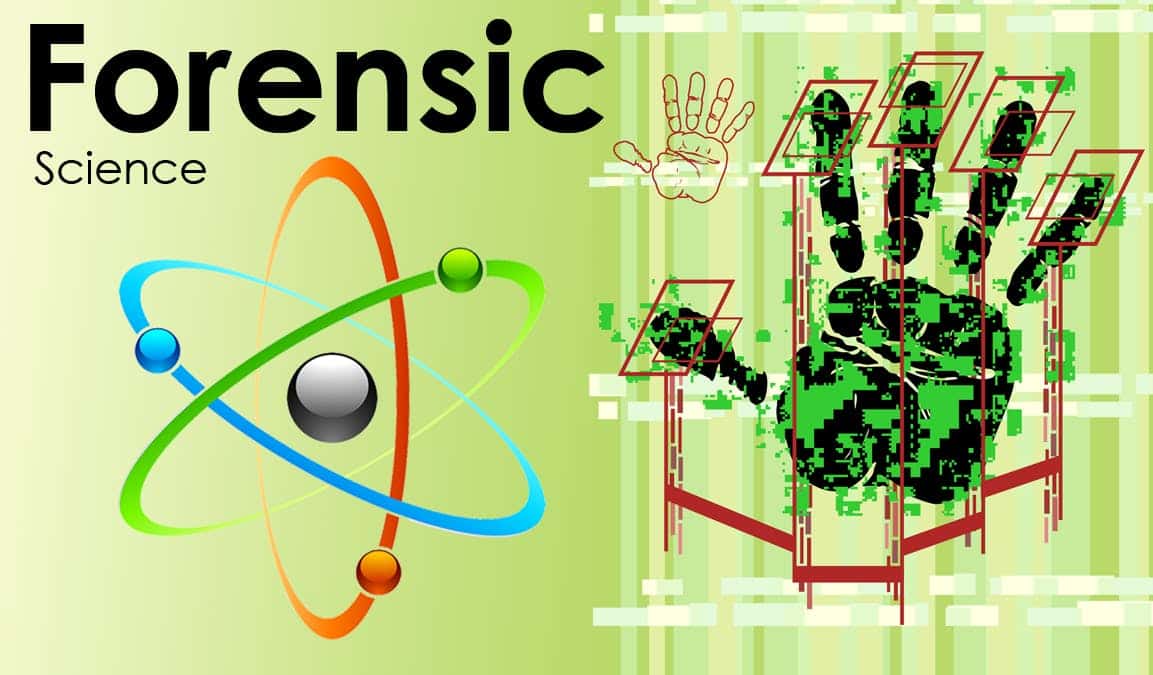Download Forensic Science PDF in Gujarati
Forensic science is a crucial field that plays a pivotal role in law enforcement and crime investigation. It combines various scientific disciplines to analyze evidence, solve crimes, and ensure justice. With the increasing popularity of digital resources, having access to quality forensic science PDFs in Gujarati can significantly enhance the understanding of this field for professionals, students, and enthusiasts. In this article, we will explore the best 20+ forensic science PDFs available in the Gujarati language, covering topics such as forensic science law, crime detection methods, ethics, and more.
Table of Contents
Download PDF
| Topic Name | Size | Download |
|---|---|---|
| 1. Fingerprint | 3.06 MB | Click here |
| 2. Burning | 3.03 MB | Click here |
| 3. Blood | 1.93 MB | Click here |
| 4. Toxicology | 0.95 MB | Click here |
| 5. Sketching | 768 KB | Clock here |
| 6. Wounds Injuries | 778 KB | Click here |
| 7. Tyre Mark Impression | 814 KB | Click here |
| 8. Semen | 1.66 MB | Click here |
| 9. Medico Legal Report | 898 KB | Click Here |
| 10. Importance of FS | 1.94 MB | Click here |
| 11. Crime Scene Management | 703 KB | Click here |
| 12. Asphyxia (Hanging) | 853 KB | Click Here |
| 13. Agnishastra 1 | 1.94 MB | Click here |
| 14. Agnishastra 2 | 4.38 MB | Click here |
| 15. Transportation of DeadBody to Mortuary | 441 KB | Click here |
| 16. PM Examination | 512 KB | Click here |
| 17. Importance of FM in police | 214 KB | Click here |
| 18. Drugs in Toxicology | 2.58 MB | Click here |
| 19. Drowning | 186 KB | Click here |
| 20. Hair | 5.74 MB | Click here |
Forensic Science PDF in Gujarati
Acquiring a comprehensive overview of forensic science in one’s native language can greatly enhance understanding. Look for PDFs that cover the fundamental concepts and techniques used in forensic investigations.
Forensic Science Law and Crime Detection Methods PDF in Gujarati
This PDF delves into the legal aspects of forensic science, focusing on the methods used for detecting and solving crimes, with an emphasis on their application in the context of Gujarati law.
Forensic Science Law and Ethics Questions and Answers
A resource that explores the ethical considerations in forensic science and provides answers to common questions, all in Gujarati.
Forensic Science PDF Notes
Concise and informative notes covering various aspects of forensic science, perfect for quick reference.
Agnishastra
This section covers the examination of fire-related incidents, including arson investigations and the analysis of burn patterns.

- “Agnishastra” refers to the application of fire-related knowledge and techniques in the field of forensic science. This specialized area deals with the investigation of fire-related incidents, such as arson, explosions, and the analysis of fire-damaged materials. It plays a crucial role in understanding the causes, effects, and patterns of fires, which is essential in both criminal investigations and fire safety.
- Forensic fire analysis involves a multidisciplinary approach, incorporating principles from chemistry, physics, engineering, and material science. It aims to determine the origin and cause of fires, identify accelerants (substances used to start or accelerate fires), and analyze fire-damaged structures and materials.
- One of the fundamental aspects of agnishastra is fire scene investigation. Forensic experts meticulously study the fire scene, looking for evidence of how the fire started, the direction it spread, and the factors that may have influenced its behavior. They examine burn patterns, residue, and other indicators to reconstruct the sequence of events, helping to uncover any foul play or deliberate fire-setting.
- The analysis of accelerants is another critical aspect of agnishastra. By identifying and analyzing the presence of accelerants in the fire scene, investigators can determine if the fire was intentionally set. Common accelerants include gasoline, kerosene, alcohol, and various flammable chemicals. The accurate identification of these substances can provide crucial evidence in arson cases.
- Furthermore, agnishastra involves the study of fire-damaged materials and structures. This includes examining the effects of fire on various materials, such as metals, wood, plastics, and textiles. Understanding how different materials react to fire helps investigators determine the intensity and duration of the fire, which is essential in establishing the cause and providing valuable information for insurance claims or legal proceedings.
- In recent years, technological advancements have greatly enhanced the capabilities of agnishastra. Techniques such as gas chromatography, mass spectrometry, and other analytical methods allow for more precise identification of accelerants and other fire-related substances. Computer modeling and simulations aid in understanding fire behavior, which is especially useful in large-scale incidents.
- Agnishastra not only assists in solving crimes but also plays a crucial role in fire prevention and safety. By understanding the causes and patterns of fires, experts can develop better fire prevention strategies, enhance building codes, and improve fire-resistant materials.
- In conclusion, agnishastra is a specialized and crucial field within forensic science pdf in gujarati, focusing on the analysis of fire-related incidents. It involves a comprehensive approach to investigating the origin, cause, and effects of fires, as well as the identification of accelerants and the study of fire-damaged materials. This knowledge not only helps in solving arson cases but also contributes to fire prevention and safety measures, making it an essential aspect of modern forensic science.
Asphyxia
Understanding the science behind asphyxia, a significant cause of death in forensic investigations, explained in Gujarati.
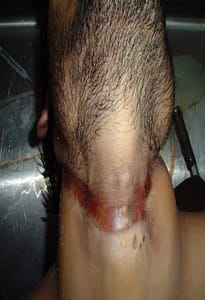
- Asphyxia is a critical concept in the field of forensic science, encompassing a range of conditions that result from the inadequate supply of oxygen to the body’s tissues. This deprivation of oxygen can arise from various sources and circumstances, each with distinctive forensic implications. Understanding asphyxia is essential for forensic experts to accurately determine the cause of death, especially when it occurs under suspicious or unclear circumstances.
- There are several forms of asphyxia that forensic scientists encounter, each with unique signs and characteristics. One of the most common forms is mechanical asphyxia, which includes cases where external forces obstruct the airways or chest, preventing the intake of oxygen. Strangulation and suffocation fall under this category, and they can be homicidal, accidental, or even suicidal. Forensic experts examine ligature marks, petechiae (tiny red or purple spots on the skin caused by broken capillaries), and other signs to differentiate between various forms of mechanical asphyxia.
- Another crucial form of asphyxia is chemical asphyxia, resulting from the inhalation or exposure to toxic gases that interfere with oxygen uptake. Carbon monoxide poisoning is a prominent example, often stemming from malfunctioning fuel-burning appliances or confined spaces without proper ventilation. Forensic analysis in these cases involves identifying the presence of toxic gases in the victim’s blood or tissues, as well as assessing the scene for potential sources of exposure.
- Positional asphyxia is another area of concern, particularly relevant when dealing with deaths occurring in police custody or during restraint. It can arise when a person’s position, often in conjunction with external factors like pressure on the chest or neck, hinders the ability to breathe. Tragically, this has been a cause of concern in cases involving police interactions, where improper techniques or excessive force may contribute to asphyxia-related deaths. Forensic experts play a pivotal role in examining these cases to determine if improper restraint was a contributing factor.
- Drowning is yet another critical form of asphyxia, especially when it comes to accidental deaths or potential homicides. Forensic scientists evaluate water in the lungs, the presence of certain particles or chemicals, and the circumstances surrounding the incident to determine if the cause of death was indeed drowning. In cases of drowning, there’s a need to distinguish between freshwater and saltwater environments, as each leaves distinct markers on the body and can affect decomposition rates.
- The accurate determination of the cause of death in asphyxia cases requires a multidisciplinary approach. Forensic pathologists, toxicologists, crime scene investigators, and other experts collaborate to gather evidence, analyze the circumstances, and reach conclusions based on the available data. This thorough examination is crucial in ensuring justice, as well as preventing similar incidents in the future by identifying potential risks or dangerous practices.
- In summary, asphyxia is a complex and multifaceted concept in forensic science PDF in gujarati, encompassing various forms that result from oxygen deprivation. Forensic experts play a pivotal role in investigating these cases, distinguishing between different types of asphyxia, evaluating the circumstances, and ultimately contributing to the determination of the cause of death. Through their work, they provide critical insights into the often challenging and intricate circumstances surrounding these deaths, helping the legal system and society at large understand and address the factors contributing to asphyxia-related fatalities.
Blood
Learn about blood analysis, blood spatter patterns, and how they are crucial in crime scene investigation.

- Blood is a crucial element in forensic science, playing a pivotal role in crime scene analysis, investigation, and the determination of crucial pieces of evidence. Its significance stems from its ability to provide valuable information about the events that transpired during a crime, the identification of individuals involved, and the assessment of potential motives. In this essay, we will delve into the various aspects of blood in forensic science, highlighting its importance, techniques used for analysis, and its impact on solving crimes.
- First and foremost, blood is a complex fluid that carries a wealth of information. Its composition, cellular components, and the various proteins it contains can reveal crucial details about the victim, the assailant, and the events leading to the crime. Forensic experts can determine the blood type of an individual, which can be essential for identifying potential suspects or confirming the presence of a particular individual at the crime scene. Blood can also provide insights into a person’s health, such as the presence of drugs or toxins, which can be vital in cases of poisoning or overdose.
- One of the most important aspects of blood in forensic science is its ability to establish a timeline and reconstruct the sequence of events. The analysis of blood spatter patterns, for example, can help experts determine the angle and direction of an attack, the number of blows inflicted, and even the type of weapon used. This information can be crucial in reconstructing the crime scene and understanding the dynamics of the crime.
- Furthermore, DNA analysis of blood samples has revolutionized forensic science. DNA carries a unique genetic code that is specific to each individual, making it a powerful tool for identification. By analyzing blood samples found at a crime scene, forensic experts can match the DNA profile to known suspects, victims, or other relevant individuals, thereby establishing connections that may have been otherwise elusive. This has led to numerous breakthroughs in solving cold cases and linking suspects to crimes.
- The techniques used in blood analysis have advanced significantly over the years. Modern forensic laboratories employ sophisticated methods, such as Polymerase Chain Reaction (PCR) and Short Tandem Repeat (STR) analysis, to extract and analyze DNA from blood samples. These techniques are highly sensitive and allow for the identification of even small traces of blood, greatly enhancing the ability to detect and analyze evidence.
- In conclusion, blood is a vital component of forensic science pdf in gujarati, offering a wealth of information that can help solve crimes and bring justice to victims. Its role in identifying individuals, establishing timelines, and providing insights into the dynamics of a crime cannot be overstated. As forensic science continues to evolve, the importance of blood analysis will remain a cornerstone in the pursuit of truth and justice in our society.
Burning
Explore the science of burning, the effects of fire on human remains, and the investigation of burnt crime scenes.

- “Burning” in forensic science refers to the examination and analysis of fire-related evidence in criminal investigations. The study of burned materials plays a crucial role in determining the origin, cause, and progression of fires, as well as in identifying potential accelerants or the presence of accelerants used to start or accelerate the fire. This field is essential in arson investigations, where determining the intentional nature of the fire is of utmost importance.
- One key aspect of burning analysis is the study of fire patterns. Forensic experts meticulously examine the burn patterns on surfaces, materials, and structures to understand how the fire spread, the points of origin, and any unusual behavior that might indicate foul play. This analysis often involves reconstructing the fire scene to provide valuable insights into the sequence of events leading to the fire and to determine if the fire was accidental or deliberately set.
- Another vital aspect of burning analysis is the identification of accelerants. Accelerants are substances used to initiate or enhance the combustion process, often found in cases of arson. Detecting these accelerants requires specialized techniques such as gas chromatography-mass spectrometry (GC-MS) to analyze residues left behind in fire debris. The identification of accelerants can help link suspects to the crime scene and establish motive, providing essential evidence in arson cases.
- Furthermore, the study of burned materials includes understanding the effects of heat on various substances. This knowledge is essential for determining if a fire reached a certain temperature, as well as for identifying any changes in materials that might have been caused by the fire. For example, the alteration in glass, paint, or metals due to exposure to high temperatures can provide valuable information about the intensity and duration of the fire.
- Forensic scientists also consider the environmental conditions during and after the fire. Factors such as ventilation, available fuels, and the presence of accelerants can significantly impact the fire’s behavior and the extent of damage. Additionally, the duration of the fire, the size of the flames, and the amount of smoke generated all leave specific signatures that can be analyzed to understand the fire dynamics.
- In conclusion, burning analysis in forensic science pdf in gujarati is a multifaceted field that plays a pivotal role in arson investigations. By studying fire patterns, identifying accelerants, and analyzing the effects of heat on materials, forensic experts contribute to the determination of the cause and origin of fires, which is essential for the proper administration of justice. The accurate interpretation of fire-related evidence helps ensure that the guilty are held accountable while protecting the rights of the innocent.
Crime Scene Management
This PDF provides essential guidance on managing crime scenes, preserving evidence, and maintaining the integrity of the investigation.

- Crime scene management is a critical component of forensic science, serving as the foundation upon which accurate investigations are built. The proper handling and analysis of crime scenes are essential to ensuring justice is served, and it requires a systematic and meticulous approach.
- One of the primary goals of crime scene management is to preserve the integrity of the scene. This involves restricting access to the area, preventing contamination, and documenting the scene thoroughly. The first responders, often law enforcement officers, play a pivotal role in securing the area and establishing a perimeter to keep unauthorized individuals out. This step is crucial because any disturbance or contamination of the crime scene can potentially compromise the evidence, leading to skewed results and unreliable conclusions.
- The next step in crime scene management is the systematic documentation of the scene. This includes photography, sketches, and detailed notes. High-quality photographs capture the scene from various angles and distances, providing a visual record of the initial conditions. Sketches, whether hand-drawn or computer-generated, help to illustrate the layout of the scene, the location of evidence, and the relationships between different objects or elements. Detailed notes, written by investigators, document the observations, actions taken, and any preliminary hypotheses.
- The collection and preservation of physical evidence are also vital aspects of crime scene management. Forensic experts carefully collect items that could be relevant to the investigation, such as fingerprints, biological samples, fibers, firearms, and more. Each piece of evidence must be properly labeled, packaged, and documented to maintain the chain of custody, ensuring that its integrity is preserved for the duration of the investigation and any potential legal proceedings.
- Once the evidence is collected, it must be analyzed by specialized forensic professionals. This analysis can provide crucial information that helps reconstruct the sequence of events, identify suspects, establish timelines, and ultimately contribute to solving the case. The quality and reliability of the analysis directly depend on the thoroughness of the crime scene management process.
- In recent years, technological advancements have significantly impacted crime scene management. DNA analysis, fingerprint databases, advanced imaging techniques, and other tools have revolutionized forensic science, enhancing the accuracy and speed of investigations. However, despite these technological advances, the fundamental principles of crime scene management remain unchanged. Careful planning, methodical execution, and attention to detail are still the cornerstones of effective crime scene management.
- In conclusion, crime scene management is a critical element of forensic science pdf in gujarati that ensures the accuracy and reliability of investigations. By preserving the integrity of the scene, documenting thoroughly, collecting and preserving evidence, and employing advanced forensic techniques, professionals in this field contribute to the pursuit of justice and the resolution of criminal cases.
Drowning
Understanding the signs of drowning, water-related deaths, and the forensic aspects involved.

- Drowning is a significant area of interest within forensic science, involving the investigation of deaths resulting from submersion in liquid, usually water. This topic is crucial for understanding the circumstances surrounding such fatalities, determining the cause of death, and providing evidence for legal proceedings. Forensic experts use a combination of scientific methods and meticulous analysis to unravel the complexities of drowning cases.
- Drowning cases often pose unique challenges in forensic investigations due to the absence of obvious external signs of violence or trauma. This requires forensic professionals to rely on a thorough examination of the circumstances, post-mortem findings, and ancillary tests to reach conclusive determinations. Establishing whether a death is due to drowning or other causes is of paramount importance for the justice system and insurance claims.
- One crucial aspect of drowning investigation is the determination of the cause of death. This involves distinguishing between “dry drowning,” “wet drowning,” and other related causes. Dry drowning occurs when the airway’s reflexes are triggered by water exposure, leading to constriction and suffocation even after the victim has left the water. Wet drowning, on the other hand, involves inhalation of water, which can lead to waterlogged lungs and ultimately respiratory failure.
- Forensic pathologists play a central role in these investigations. They conduct autopsies, examining the body’s internal organs, particularly the lungs, to detect any signs of water aspiration or other abnormalities that may suggest drowning. The presence of frothy fluid in the airways and lungs, known as “pulmonary edema,” is a key finding in cases of drowning. Additionally, the absence of other injuries or conditions that might explain the victim’s death helps support the conclusion of drowning.
- The time elapsed between submersion and recovery of the body can significantly impact the forensic analysis. Extended immersion can lead to changes in the body that might make the diagnosis more challenging. Water temperature, the victim’s state of health, and the nature of the water (freshwater or saltwater) can also affect the forensic findings, making it necessary for forensic experts to consider these variables during their investigation.
- Aside from the autopsy, additional techniques can aid in confirming a diagnosis of drowning. Toxicological analysis of blood and tissue samples can provide insights into whether the victim was alive at the time of immersion, as well as any potential influence of drugs or alcohol. Analysis of diatom populations in the victim’s lungs or bone marrow can also be used to determine if drowning occurred in freshwater or saltwater, further refining the investigation.
- Forensic professionals must be meticulous and objective, presenting their findings in a clear and unbiased manner. This is especially important in cases of suspected foul play, where the question of whether the drowning was accidental, suicidal, or homicidal needs to be addressed. The integration of forensic findings with the circumstances of the incident, witness statements, and other pieces of evidence is crucial in establishing a comprehensive understanding of the case.
- In conclusion, the investigation of drowning cases in forensic science pdf in gujarati is a multifaceted endeavor requiring the expertise of forensic pathologists, toxicologists, and other specialists. It involves a meticulous examination of the victim’s body, analysis of relevant variables, and consideration of the circumstances surrounding the incident. By employing a comprehensive and scientific approach, forensic experts can provide valuable insights into the cause of death, ultimately aiding the legal system in delivering justice.
Drugs in Toxicology
A detailed look at toxicology, focusing on drug-related cases, their analysis, and their impact on the investigation.

- Toxicology, a critical branch of forensic science, plays a pivotal role in the investigation of crimes involving drugs. This multidisciplinary field combines elements of chemistry, biology, pharmacology, and medicine to identify and understand the effects of various substances on the human body. The application of toxicology in forensic science is particularly significant in cases where drugs are involved, as it can provide crucial evidence to determine the cause of death, the presence of drugs in a person’s system, and even shed light on the circumstances surrounding a crime.
- One of the primary functions of toxicology in forensic science is post-mortem analysis. When a person dies unexpectedly or under suspicious circumstances, toxicological tests are often conducted to determine if the deceased had any drugs or toxic substances in their system. These tests can reveal the presence of illicit drugs, prescription medications, alcohol, or other chemicals that may have contributed to the person’s demise. The results of these tests can help establish whether foul play was involved, providing critical information to law enforcement and the judicial system.
- Toxicology also plays a vital role in cases of driving under the influence (DUI) and accidents. When accidents occur, especially those resulting in injuries or fatalities, toxicology tests on the individuals involved can determine if drugs or alcohol were contributing factors. This information is essential for legal proceedings and insurance claims, as it helps establish liability and responsibility.
- Moreover, toxicology can provide insights into the effects of drugs on the human body. This knowledge is essential for understanding the potential dangers and risks associated with substance abuse. It helps law enforcement agencies and healthcare professionals to educate the public about the harmful effects of drugs and formulate effective drug control policies. By analyzing drug concentrations in biological samples, toxicologists can also assess the potential for overdose and better understand how different drugs interact with each other, enabling more informed medical treatment.
- Forensic toxicology doesn’t solely focus on post-mortem examinations or accident investigations. It is also crucial in cases where drugs are involved in criminal activities such as drug trafficking, poisoning, or sexual assault. Toxicology can determine if a victim was drugged against their will, providing evidence to support the victim’s claims and aiding in the pursuit of justice.
- In recent years, advancements in toxicology techniques and technology have expanded the capabilities of this field. High-performance liquid chromatography (HPLC), gas chromatography-mass spectrometry (GC-MS), and other analytical methods have improved the accuracy and sensitivity of detecting even trace amounts of drugs in biological samples. These advancements enable toxicologists to provide more detailed and reliable information, enhancing the value of their findings in forensic investigations.
- In conclusion, toxicology plays a crucial role in forensic science pdf in gujarati, especially when drugs are involved. It helps determine the cause of death, presence of substances in the body, effects of drugs, and the circumstances surrounding various crimes. By providing essential evidence and insights, toxicology contributes significantly to the pursuit of justice, the prevention of substance abuse, and the overall safety of society.
Fingerprints
An in-depth exploration of fingerprints, their uniqueness, and their significance in identifying individuals.
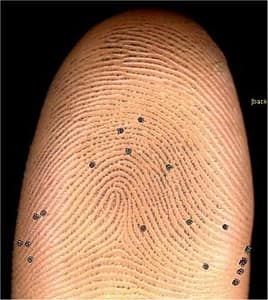
- Fingerprints have long held a fascination for both scientists and law enforcement professionals. Their intricate patterns, inherent individuality, and durability make them a cornerstone of forensic science, playing a crucial role in the identification of individuals. This essay explores the significance of fingerprints in forensic science, discussing their uniqueness, classification, analysis, and their broader implications in criminal investigations.
- The uniqueness of fingerprints is the fundamental principle underlying their use in forensic science. No two individuals, not even identical twins, share the same fingerprint patterns. The ridges, furrows, and minutiae, formed during fetal development, create a distinct biometric signature that remains constant throughout a person’s life. This uniqueness serves as the basis for their application in criminal investigations and identification processes.
- The classification of fingerprints simplifies their analysis and comparison. Henry Faulds and Sir Francis Galton were among the pioneers who recognized the value of categorizing fingerprints. The Henry Classification System, developed in the late 19th century, laid the foundation for modern fingerprint identification. Today, fingerprint patterns are categorized into three primary types: arches, loops, and whorls, with numerous subcategories based on ridge patterns and minutiae. This systematic classification facilitates the organization of fingerprint databases and speeds up the matching process.
- The analysis of fingerprints involves the examination of ridge patterns and minutiae points, which are unique to each print. Automated fingerprint identification systems (AFIS) have revolutionized this process, allowing rapid comparison of prints in large databases. AFIS technology detects and matches minutiae, providing investigators with potential matches for further verification. This has drastically improved the efficiency and accuracy of fingerprint identification, reducing human error and increasing the chances of identifying individuals.
- Fingerprints play a critical role in criminal investigations. They are collected from crime scenes and compared with existing databases to identify suspects or victims. Fingerprint evidence has been instrumental in solving countless cases, linking individuals to crimes, and exonerating the innocent. Moreover, the presence or absence of fingerprints at a crime scene can provide crucial insights, helping reconstruct events and establish timelines.
- The broader implications of fingerprints in forensic science extend beyond individual identification. Fingerprint analysis can link suspects to multiple crime scenes, revealing patterns that may indicate a serial offender. It can also help in identifying unknown victims, aiding in the closure for grieving families. Additionally, fingerprint evidence is admissible in court and carries substantial weight, often acting as a decisive factor in establishing guilt or innocence.
- Despite its significance, fingerprint analysis is not without challenges. Factors like partial prints, degraded surfaces, and human error can complicate the process. Moreover, as with any forensic evidence, proper collection, preservation, and documentation are essential to maintain the integrity of the evidence.
- In conclusion, fingerprints are a cornerstone of forensic science pdf in gujarati, providing unique and reliable means of individual identification. Their use in criminal investigations has revolutionized the field, enabling law enforcement professionals to link individuals to crimes, solve cases, and ensure justice. As technology continues to advance, fingerprint analysis will undoubtedly remain an invaluable tool, evolving to meet the demands of modern forensic science and contributing to a safer society.
Importance of Forensic Medicine in Police
This PDF highlights the vital role of forensic medicine in police work, emphasizing its contribution to solving crimes.

- Forensic medicine plays a pivotal role in the field of law enforcement and criminal investigation. It serves as a crucial bridge between the medical and legal domains, providing valuable insights into various aspects of crime scene analysis, victim identification, and the determination of causes and manners of death. The integration of forensic medicine into police work is essential for ensuring a fair and effective justice system.
- One of the primary contributions of forensic medicine to the police is the accurate determination of the cause of death. When a suspicious death occurs, forensic pathologists examine the body, conduct autopsies, and analyze the evidence to ascertain whether the death resulted from natural causes, accidents, suicides, or homicides. This information is critical for law enforcement agencies to make informed decisions about further investigation, the identification of potential suspects, and the development of appropriate strategies for solving the case.
- Moreover, forensic medicine plays a vital role in victim identification, particularly in cases of mass disasters, accidents, or criminal activities where individuals cannot be identified through traditional means. Forensic experts utilize techniques such as DNA analysis, dental records, and fingerprint comparison to establish the identity of victims. This aspect is not only crucial for providing closure to the families of the deceased but also for facilitating the legal process, including the prosecution of those responsible for the crimes.
- Forensic medicine also assists the police in unraveling complex criminal cases by providing valuable evidence that can stand up in court. Blood spatter analysis, toxicology reports, and trace evidence examination can often be instrumental in establishing the timeline of events, reconstructing crime scenes, and linking suspects to the scene or victim. This scientific approach to evidence collection and analysis greatly enhances the credibility and reliability of the evidence presented in court, ensuring that justice is served.
- Furthermore, forensic medicine aids in safeguarding the rights of both victims and suspects. By providing objective, scientific findings, it helps prevent wrongful convictions, ensuring that only the guilty are held accountable for their actions. This is especially important in cases where the consequences of a wrongful conviction can be devastating.
- In conclusion, the importance of forensic medicine in police work cannot be overstated. It provides critical information for determining causes of death, victim identification, and the collection of reliable evidence, all of which are essential for a fair and effective justice system. The integration of forensic medicine into law enforcement processes ensures that the truth is unveiled, the innocent are protected, and the guilty are held accountable, ultimately serving the cause of justice in society.
Medico Legal Report
Understanding the process of creating a medico-legal report, a crucial document in forensic investigations.

- A Medico-Legal Report, often referred to as a forensic medical report, holds a pivotal position within the realm of forensic science. This report is an essential component of the legal system, providing an objective and thorough examination of physical evidence, injuries, or medical conditions, which are critical in legal proceedings. This essay explores the significance, process, and key elements of a Medico-Legal Report within the field of forensic science.
- The primary purpose of a Medico-Legal Report is to bridge the gap between medicine and the law. It serves as a crucial link in cases where medical expertise is required to assess the impact of injuries, determine cause of death, evaluate the presence of toxic substances, or provide insight into the physical and psychological effects of a crime on the victim. This report assists legal authorities in making informed decisions based on scientifically sound evidence.
- The process of creating a Medico-Legal Report involves meticulous examination, documentation, and analysis. Forensic experts, often specialized in forensic medicine or pathology, conduct comprehensive assessments. They examine injuries, collect relevant samples, document the findings, and analyze the medical data to establish a clear understanding of the case. This process is carried out in an unbiased and objective manner to ensure the credibility of the report in court.
- Key elements of a Medico-Legal Report include detailed descriptions of injuries, their location, severity, and potential mechanisms of causation. The report also includes information about the victim’s overall health, any pre-existing medical conditions, and the possible short-term and long-term consequences of the injuries. If toxic substances are involved, the report provides information about their presence, concentrations, and potential effects on the victim. Furthermore, the report might include psychological assessments to understand the emotional impact on the victim.
- The Medico-Legal Report plays a vital role in various legal scenarios. In cases of assault or violence, the report helps determine the nature and extent of injuries, aiding in the identification of the aggressor. In cases of suspicious deaths, a detailed autopsy and forensic analysis, as part of the report, can provide crucial insights into the cause and circumstances surrounding the death. Additionally, in cases of alleged medical malpractice, the report can evaluate the quality of medical care provided and its potential impact on the patient.
- The report’s credibility relies on the expertise of the forensic examiner, adherence to standardized protocols, and accurate documentation. The impartiality of the examination and the unbiased presentation of the findings are essential to maintain the integrity of the legal process.
- In conclusion, a Medico-Legal Report serves as a fundamental link between forensic science pdf in gujarati and the legal system. It provides essential information that aids in establishing the facts of a case, assisting legal authorities in making well-informed decisions. The detailed examination, objective analysis, and comprehensive documentation make this report a cornerstone in the pursuit of justice, ensuring that science and medicine play a crucial role in legal proceedings.
PM Examination
Learn about post-mortem examinations, their procedures, and the valuable information they provide in solving cases.

- Postmortem examination, also known as autopsy, is a crucial component of forensic science. It plays a pivotal role in unraveling the circumstances surrounding an individual’s death, determining the cause, manner, and mechanism of death, as well as providing critical information for legal and medical investigations. This essay will delve into the significance, process, and key findings of postmortem examinations in the field of forensic science.
- The importance of postmortem examinations cannot be overstated. These examinations provide a wealth of information that can shed light on various aspects of a person’s demise. Forensic pathologists, the experts who perform autopsies, meticulously examine the body, inside and out, looking for any signs of injury, disease, or other factors that might have contributed to the death. This examination helps to determine whether the death was natural, accidental, homicidal, or suicidal, which is crucial for legal proceedings and closure for the family of the deceased.
- The process of a postmortem examination is a meticulous and systematic one. It begins with a thorough external examination, documenting any visible injuries, marks, or abnormalities. This is followed by an internal examination, where the organs and tissues are carefully examined, weighed, and sampled for further analysis. Toxicological tests are often conducted to detect the presence of drugs, alcohol, or other substances in the body. All findings are recorded, and samples are preserved for potential future investigations.
- Key findings from postmortem examinations can provide critical evidence in legal cases. Determining the cause of death, whether it’s due to trauma, disease, poisoning, or other factors, is crucial for the proper administration of justice. In cases of suspected homicide, the postmortem examination can reveal vital information about the nature of the injuries, the potential murder weapon, and the timeline of events leading to the death. This information helps law enforcement agencies build their case and bring the perpetrators to justice.
- Moreover, postmortem examinations can uncover previously undiagnosed medical conditions or diseases. This is essential for public health, as identifying outbreaks or patterns of diseases that may have contributed to the individual’s death can help prevent further spread. It can also provide valuable insights into the prevalence of certain medical conditions in a population, contributing to healthcare research and planning.
- In conclusion, postmortem examinations are a cornerstone of forensic science pdf in gujarati, providing critical information about the cause, manner, and mechanism of death. They assist legal investigations, contribute to public health insights, and offer closure for the families of the deceased. The careful and systematic process of postmortem examinations, combined with the expertise of forensic pathologists, makes this practice an indispensable tool in the pursuit of truth and justice.
Semen
The forensic analysis of semen samples and its relevance in sexual assault investigations.
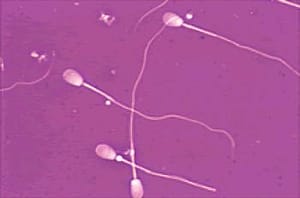
- Semen is a crucial element in forensic science, playing a significant role in the investigation and analysis of sexual assault cases. Forensic examination of semen is essential for identifying perpetrators, providing crucial evidence in court proceedings, and ensuring justice for victims. This essay will explore the importance of semen analysis in forensic science, the techniques used for its detection, and its role in modern criminal investigations.
- Semen, the fluid that carries sperm, contains a unique combination of proteins, enzymes, and DNA that can be used to identify individuals involved in sexual offenses. When a sexual assault occurs, the presence of semen at the crime scene or on the victim’s body is a key piece of evidence. This evidence can link the perpetrator to the crime, corroborating the victim’s testimony and strengthening the case against the accused. Additionally, the absence of semen can also be informative, as it might suggest that sexual activity did not take place or that proper precautions were taken by the offender.
- The primary technique used for detecting semen in forensic investigations is microscopy. A trained forensic examiner can identify the presence of sperm cells under a microscope, confirming the presence of semen. However, this method has its limitations, such as the need for a skilled analyst and the potential for false negatives if the sample is too degraded or the number of sperm cells is low.
- Advancements in DNA analysis have revolutionized forensic science, including semen analysis. DNA profiling allows for a more accurate and sensitive identification of semen, even in cases with small or degraded samples. The extraction and analysis of DNA from semen can link the DNA profile of the perpetrator to the crime scene, providing a powerful tool for criminal investigations. DNA analysis has significantly increased the reliability and precision of semen identification, making it a crucial aspect of modern forensic practices.
- In recent years, there has been a growing emphasis on the preservation of evidence, especially DNA evidence, in sexual assault cases. Proper collection, storage, and handling of semen samples are essential to maintain the integrity of the evidence. Many jurisdictions now have protocols in place to ensure the proper collection of semen samples, preserving them for analysis and preventing contamination or degradation.
- In conclusion, semen analysis plays a vital role in forensic science pdf in gujarati, particularly in sexual assault cases. The identification of semen provides essential evidence for linking perpetrators to the crime, corroborating victim testimony, and ensuring justice. The combination of microscopy and DNA analysis has greatly improved the accuracy and sensitivity of semen detection. As forensic techniques continue to evolve, the importance of semen analysis in criminal investigations will remain paramount, ensuring that justice is served and perpetrators are held accountable for their actions.
Tyre Mark Impression Examination
Understanding tire marks and their significance in linking suspects to crime scenes.

- Forensic science plays a crucial role in the investigation and resolution of criminal cases. One lesser-known but highly valuable aspect of this field is the examination of tyre mark impressions left at crime scenes. Tyre mark impression examination is a specialized branch of forensic science that focuses on analyzing the marks and patterns left by vehicle tyres on various surfaces. This examination can provide essential information to law enforcement agencies, helping them reconstruct the events leading up to a crime, identifying vehicles involved, and even linking suspects to the scene.
- The process of tyre mark impression examination involves a combination of fieldwork, photography, and laboratory analysis. When a vehicle drives over a surface, such as dirt, sand, or a road, it can leave unique tread patterns and impressions. These impressions may vary based on the type, size, and condition of the tyres, as well as the texture and consistency of the surface. Skilled forensic examiners carefully document these impressions using specialized equipment such as cameras, rulers, and casting materials.
- One of the primary objectives of tyre mark impression examination is to match these impressions to specific tyres, thereby identifying the make and model of the vehicle involved. This information can be crucial in narrowing down the pool of suspects or determining the type of vehicle used in a crime. Furthermore, the examination can help establish the speed, direction, and potential maneuvers of the vehicle, which aids in reconstructing the sequence of events.
- The examination of tyre marks is not limited to crime scenes involving vehicles. It can also be used to analyze hit-and-run incidents, where a vehicle strikes a pedestrian or another object and leaves tyre marks behind. In such cases, the examination can assist in identifying the type of vehicle responsible, which can be instrumental in locating the driver and seeking justice for the victims.
- To achieve accurate results, forensic experts employ a range of techniques during the analysis of tyre mark impressions. These techniques may include casting the impressions, comparing tread patterns to a database of known tyre types, and considering factors like wear, deformation, and damage to the tyres. The use of advanced technology, such as three-dimensional scanning and digital image processing, has further enhanced the precision and efficiency of this examination.
- Despite its undeniable value, tyre mark impression examination does face challenges. Weather conditions, the nature of the surface, and the passage of time can degrade or alter tyre marks, making them more difficult to analyze. Additionally, a limited database of tyre treads for comparison can sometimes hinder the process of identifying the specific make and model of a tyre.
- In conclusion, tyre mark impression examination is a crucial component of forensic science pdf in gujarati that plays a significant role in the investigation and resolution of various criminal cases. By meticulously analyzing tyre marks left at crime scenes, forensic experts can provide law enforcement agencies with essential information to reconstruct events, identify vehicles, and link suspects to the scene. As technology advances and databases expand, this field will likely continue to evolve, improving our ability to extract valuable insights from the seemingly insignificant marks left by vehicle tyres.
Hair
The analysis of hair samples, including their role in identifying individuals and providing evidence in various cases.
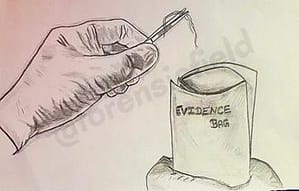
- Forensic science is a multidisciplinary field that plays a crucial role in criminal investigations by utilizing scientific methods to analyze evidence, solve crimes, and provide justice. One fascinating aspect within this field is the analysis of hair, which can yield valuable information about individuals involved in a crime scene. Hair evidence can be an essential tool in identifying suspects, providing timelines, and linking individuals to a specific location or event.
- Hair is composed of a protein called keratin, which is arranged in a fibrous structure. It grows from hair follicles embedded in the skin. While hair itself lacks DNA, the root (the part of the hair enclosed in the follicle) often contains nucleated cells, providing a potential source of genetic material for identification purposes. Hair is categorized into three main parts: the cuticle (outer protective layer), the cortex (the main body), and the medulla (the innermost core, which may or may not be present).
- In forensic science, hair analysis can be useful in several ways :
- Identification : Hair can help in identifying individuals by comparing the morphology, color, and chemical composition of the hair found at a crime scene with known samples. However, it’s essential to note that hair alone cannot definitively identify a single person but can be used as supporting evidence in combination with other factors.
- Linking Suspects to Crime Scenes : Hair evidence found on a victim’s clothing or at a crime scene can link a suspect to that location. This can be particularly useful when there’s a possibility of physical contact between the suspect and the victim.
- Timelines and Toxicology : Hair can provide a timeline of events by analyzing the length and growth patterns. Additionally, it can reveal exposure to toxins or drugs, as these substances can be incorporated into the hair as it grows. This information can be vital in cases involving poisonings or long-term drug use.
- Animal vs. Human Hair : Distinguishing between animal and human hair is another crucial aspect of forensic hair analysis. This differentiation can be crucial in cases where the presence of animal hair may indicate the involvement of animals, such as in cases of animal attacks.
- Forensic Hair Comparison : Experts can compare hair samples to determine if they originated from the same individual or if they share certain characteristics, helping establish links between suspects, victims, and crime scenes.
- It’s important to recognize the limitations of hair analysis in forensic science. While it can provide valuable information, it is not as definitive as DNA analysis. Hair can be transferred through various means, leading to potential contamination. Moreover, individual variations in hair characteristics may limit the precision of certain identifications.
- In recent years, advancements in technology have improved the accuracy and reliability of hair analysis. Microscopic examination, along with molecular techniques, can yield more detailed information. However, it’s essential to use hair evidence in conjunction with other forensic methods to form a comprehensive picture of the events surrounding a crime.
- In conclusion, hair analysis is a significant component of forensic science pdf in gujarati, providing valuable insights into criminal investigations. While not a standalone method for identifying individuals, it can serve as crucial supporting evidence when used in combination with other forensic techniques. As technology continues to advance, the role of hair analysis in forensic science will likely become even more refined, enhancing our ability to uncover the truth in complex cases.
Wounds and Injuries
Learn to analyze wounds and injuries, determine their causes, and interpret their significance in legal contexts.
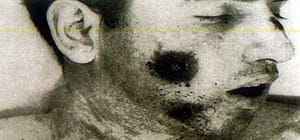
- Wounds and injuries play a crucial role in forensic science, providing valuable insights into the circumstances surrounding a crime or event, the mechanism of injury, and the potential involvement of individuals. Forensic experts meticulously analyze wounds to reconstruct events, determine the nature of injuries, and ascertain whether they are consistent with the given accounts or if foul play is suspected.
- One of the fundamental aspects of examining wounds in forensic science is the differentiation between types of injuries. These can range from blunt force trauma, sharp force injuries, firearm wounds, to thermal injuries and more. Each type leaves distinct patterns, which forensic professionals use to decipher the method of injury and the potential weapon involved. Understanding the characteristics of these injuries allows experts to correlate them with the available evidence and testimonies, ultimately contributing to the establishment of a coherent narrative.
- Forensic experts also delve into the assessment of the severity of wounds, which is crucial in understanding the potential lethality of an injury. By examining factors such as the depth, size, location, and impact on vital structures, forensic pathologists can determine the level of force exerted and the potential consequences for the victim. This assessment plays a vital role in criminal investigations, as it aids in understanding the intentionality behind the infliction of injuries, thereby aiding in identifying perpetrators.
- Furthermore, wound analysis can help in determining the sequence of events during a crime. When multiple wounds are present on a victim or in cases involving multiple victims, forensic professionals analyze the injuries’ chronological order. This aids in reconstructing the sequence of events and can provide valuable insight into the dynamics of the incident. Such reconstructions are essential for establishing timelines and verifying the accounts of involved parties.
- In some cases, wounds might not only be inflicted by an external party but may also be self-inflicted. Distinguishing between self-inflicted injuries and those caused by others is a complex task. Forensic experts look for subtle signs that indicate self-harm, such as the angle and direction of the wounds, the presence of hesitation marks, and the context in which the injuries occurred. Understanding the motivations behind self-inflicted wounds is vital in cases where mental health issues, insurance fraud, or other complex factors are involved.
- Additionally, forensic science relies on wound analysis to link injuries to specific weapons. Sharp force injuries, for example, can provide clues about the type of blade or instrument used based on the characteristics of the wound, such as the shape, depth, and direction of the injury. Similarly, firearm wounds can reveal critical information about the caliber of the weapon used, the distance from which the shot was fired, and the trajectory of the bullet, all of which can help in identifying the firearm and the potential shooter.
- In conclusion, wounds and injuries hold a central position in forensic science pdf in gujarati. By meticulously analyzing the types, severity, patterns, and circumstances of injuries, forensic experts can unravel the mysteries surrounding crimes, reconstruct events, and provide crucial evidence in legal proceedings. Their expertise in wound analysis contributes significantly to the pursuit of justice and the accurate determination of events, ensuring that the truth prevails in the face of criminal activities.
Transportation of Dead Body to Mortuary
A guide to the proper procedures for transporting deceased individuals, ensuring the preservation of evidence.

- The transportation of a deceased body to a mortuary is a crucial aspect of forensic science, as it plays a pivotal role in preserving evidence, ensuring accurate post-mortem examinations, and respecting the deceased and their families. This process involves a combination of scientific procedures, legal considerations, and ethical obligations, all of which contribute to the comprehensive investigation and documentation of a person’s death.
- One of the primary objectives in transporting a dead body to a mortuary is to maintain the integrity of potential evidence. Forensic experts understand that crucial information about the cause of death, injuries, and other relevant details may be derived from the body and its surroundings. Proper handling and transportation help ensure that this evidence is not compromised, contaminated, or lost, which is essential for the subsequent forensic analysis and legal proceedings.
- The transportation process begins at the scene of death, often under the supervision of law enforcement personnel. They document the condition of the body, its position, and any physical evidence that might be present. Following this initial assessment, the body is carefully handled, and specific protocols are followed to avoid damaging any potential evidence. It is placed in a body bag or stretcher, depending on the circumstances and the local regulations.
- The choice of transportation also depends on various factors such as distance, weather conditions, and available resources. In some cases, particularly when dealing with long distances or adverse conditions, refrigeration or preservation techniques might be necessary to prevent decomposition and ensure the body’s suitability for a thorough post-mortem examination.
- Additionally, legal considerations play a significant role in the transportation of a dead body. Laws and regulations regarding the transportation of human remains can vary by jurisdiction, and forensic professionals must be well-versed in these rules to ensure compliance. This knowledge helps prevent any legal complications that could arise during the transportation process.
- Moreover, ethical considerations are paramount in this process. Respect for the deceased and their family is a fundamental principle in forensic science. Sensitivity and empathy are essential when handling the body and interacting with grieving family members. Maintaining dignity during the transportation process helps ease the emotional burden on the family and contributes to a more cooperative environment during the investigation.
- In conclusion, the transportation of a dead body to a mortuary is a critical element of forensic science pdf in gujarati. It requires a combination of scientific expertise, legal knowledge, and ethical considerations to ensure the preservation of evidence, compliance with laws, and respect for the deceased and their loved ones. This process serves as the foundation for a thorough post-mortem examination, which is essential for uncovering the truth behind the cause of death and providing closure to those affected by the loss.
Sketching in Forensic Science
Understanding the importance of crime scene sketches and how to create accurate representations.

- Sketching in forensic science plays a pivotal role in documenting and preserving crime scenes, providing investigators with a visual representation that aids in understanding the spatial relationships, physical evidence, and overall context of the incident. This fundamental aspect of the forensic process ensures accuracy, transparency, and the ability to reconstruct the scene, which is crucial for the criminal justice system.
- Forensic sketching is not limited to artistic talent; it requires a trained forensic artist or technician who understands the principles of perspective, scale, and the importance of detail. The sketcher’s keen observational skills and ability to translate three-dimensional scenes onto a two-dimensional surface are invaluable. They must capture the position of objects, landmarks, evidence, and relevant measurements with precision.
- The sketching process typically begins by establishing the boundaries of the crime scene. This initial sketch, often called the “overall” or “rough” sketch, outlines the area and includes reference points, such as walls, doors, and other features. This gives a basic understanding of the layout and spatial arrangement.
- Once the overall sketch is completed, the focus shifts to creating detailed sketches of specific aspects of the scene, including the position of evidence, blood spatter patterns, bullet trajectories, and any other relevant details. These sketches are essential for accurately representing the crime scene to other investigators, legal professionals, and potentially in court.
- Forensic sketching not only aids in documentation but also assists in communicating complex information to a wider audience. It bridges the gap between the crime scene and those who may not have had direct access to it. Lawyers, jurors, and judges can better understand the evidence presented, enhancing the transparency and fairness of the judicial process.
- Advancements in technology have introduced digital sketching tools that enhance the precision and efficiency of the process. Computer-aided sketching programs allow for detailed and accurate representations that can be easily shared and manipulated. However, traditional hand-drawn sketches still hold value, as they allow the artist to emphasize certain aspects and provide a unique perspective.
- Moreover, forensic sketching is not limited to crime scenes. It is also utilized in facial reconstructions, age progressions, and composite sketches of suspects. These applications can be crucial in identifying and apprehending individuals involved in criminal activities.
- In conclusion, sketching is an indispensable component of forensic science pdf in gujarati. It preserves crucial information about crime scenes, aids in investigation, and facilitates the communication of complex spatial relationships and evidence to a broader audience. It bridges the gap between the physical scene and the courtroom, ensuring justice is served through accurate and transparent representation.
Toxicology
Further exploration of toxicology, including the analysis of poisons, drugs, and their effects on the human body.

- Forensic science, with its diverse array of disciplines, plays a crucial role in unraveling mysteries surrounding crime scenes. One such integral branch is toxicology, the study of the effects of chemical substances on living organisms. Toxicology’s application in forensic science is pivotal in determining the presence, concentration, and potential impact of toxic substances in a variety of scenarios, including homicides, accidents, and cases of drug overdose. By delving into toxicology, forensic experts can provide vital evidence to legal proceedings, helping to elucidate the circumstances of an incident and providing justice for victims.
- Toxicology serves as a bridge between the world of chemistry and the human body, where even minuscule amounts of a substance can have profound effects. In forensic toxicology, the focus is primarily on identifying and quantifying drugs, alcohol, poisons, and other chemical compounds in biological samples, such as blood, urine, and tissues. This information can reveal crucial details about the events leading to a person’s death or illness.
- One of the most common applications of toxicology in forensics is determining the cause of death. When a person dies under suspicious circumstances, toxicological analysis can unveil whether the deceased had ingested toxic substances, whether they were under the influence of drugs or alcohol, or if any other chemical factors contributed to their demise. This information is vital in establishing the manner of death, be it accidental, homicidal, or self-inflicted.
- Toxicology is also instrumental in cases of drug-related incidents. The rise of substance abuse has made toxicological analysis an indispensable tool in assessing cases of drug overdose or poisoning. By analyzing biological samples, forensic toxicologists can identify the presence of illicit drugs, prescription medications, or other toxic agents. This information is valuable not only for determining the immediate cause of the incident but also for understanding the broader context of substance abuse patterns in society.
- Additionally, toxicology plays a significant role in cases involving environmental toxins or occupational hazards. It helps in identifying exposure to harmful substances and linking them to health issues or fatalities. This aspect of toxicology extends its impact beyond individual cases, contributing to public health and safety regulations.
- The field of forensic toxicology constantly evolves, driven by advancements in analytical techniques and a deeper understanding of how various substances interact with the human body. Chromatography, mass spectrometry, and immunoassays are among the sophisticated methods employed by forensic toxicologists to detect and quantify trace amounts of substances in complex biological matrices.
- However, like any scientific discipline, toxicology in forensic science is not without its challenges. Interpretation of toxicological results requires expertise, as factors such as post-mortem redistribution, individual tolerance, and the presence of multiple substances can complicate the analysis. Standardization of procedures, maintaining quality control, and the need for rigorous validation of methods are ongoing concerns in the field.
- In conclusion, toxicology is a cornerstone of forensic science pdf in gujarati, shedding light on the presence and effects of chemical substances in a wide range of scenarios. Its applications in determining the cause of death, assessing cases of drug-related incidents, and identifying environmental toxins are invaluable to the pursuit of justice and the protection of public health. As toxicology continues to advance, it strengthens its position as an essential tool in the forensic scientist’s arsenal, providing insights into the mysterious interactions between chemicals and the human body.
FAQ
What are the best sources for finding “Forensic Science PDFs in Gujarati” ?
Some recommended sources for finding “Forensic Science PDFs in Gujarati” include reputable educational websites, online libraries, academic institutions, and government websites.
Can you suggest websites that offer a collection of “Forensic Science PDFs in Gujarati” ?
Websites like Gujarat University’s official website, educational platforms like Study Materials, and online libraries like GujaratiBooks.com often offer a variety of “Forensic Science PDFs in Gujarati”.
Are there any government sources for accessing “Forensic Science PDFs in Gujarati” ?
Yes, government websites related to education, such as the Gujarat State Education Board (GSEB) or the National Digital Library of India (NDLI), may have resources on “Forensic Science in Gujarati”.
How can I ensure the authenticity and accuracy of the “Forensic Science PDFs in Gujarati” I find online ?
Look for PDFs from reputable educational institutions, government sources, or well-known authors. Cross-referencing information and checking for citations within the PDFs can help verify their accuracy.
Are there any online communities or forums where I can ask for recommendations on “Forensic Science PDFs in Gujarati” ?
Platforms like Quora, Reddit, or specialized educational forums can be useful for seeking recommendations and guidance on finding reliable “Forensic Science PDFs in Gujarati”.
Why This PDF ?
This curated list of forensic science PDFs in Gujarati provides a valuable resource for individuals interested in understanding the intricacies of crime detection, investigation, and the vital role forensic science plays in the legal system. Whether you’re a student, a law enforcement professional, or simply intrigued by the world of forensic science, these PDFs will help you gain insights into this captivating field. Happy learning !
જો તમારી પાસે કોઈ સારું મટીરીયલ હોય તો નીચે આપેલ WhatsApp પર Send કરવા નમ્ર વિનંતી, જેથી અમે તે PDF આમાં શામેલ કરી શકીએ.


